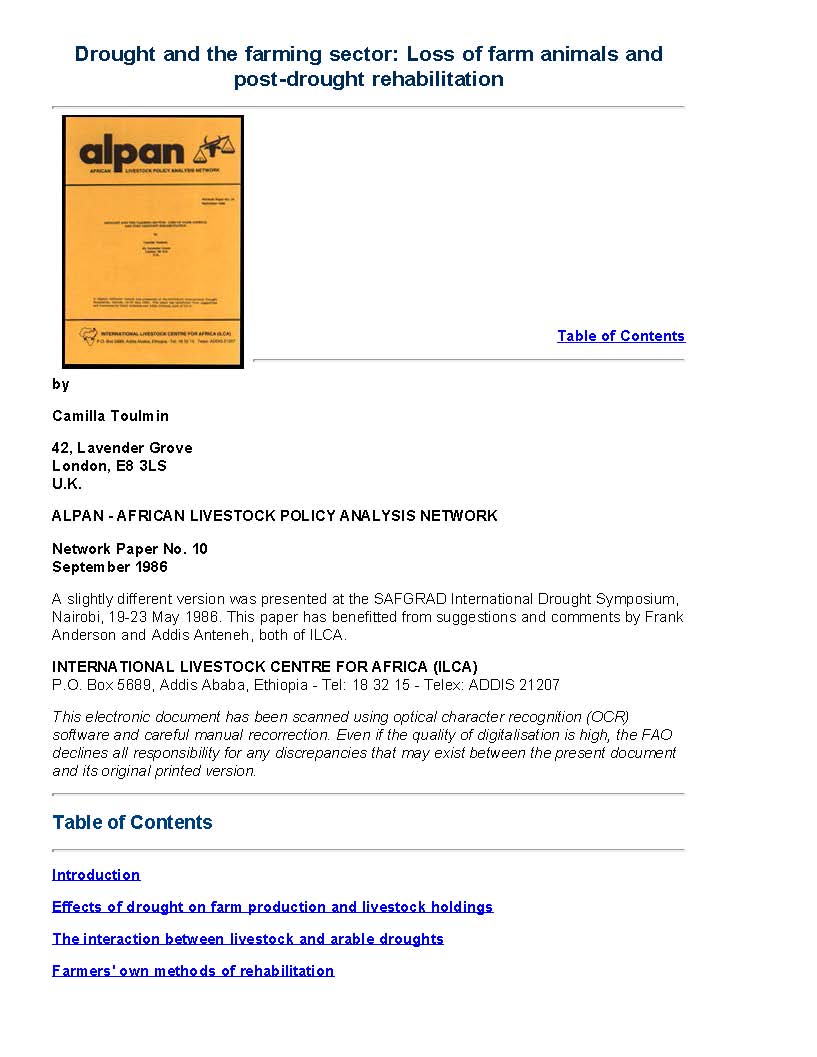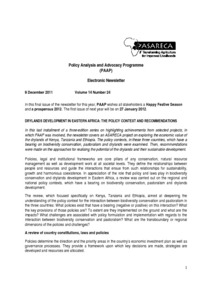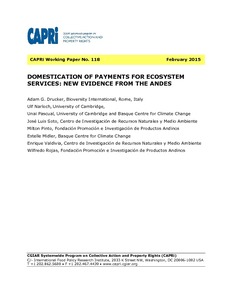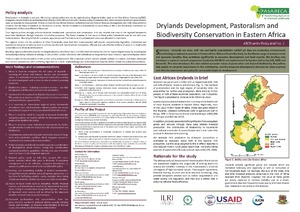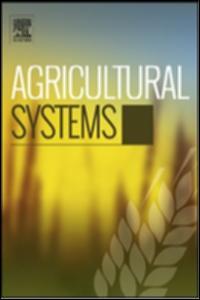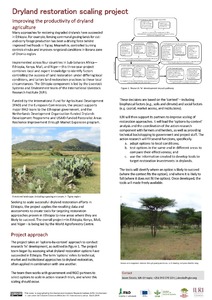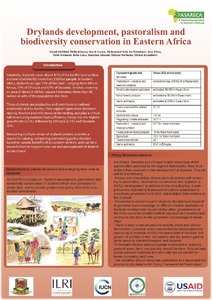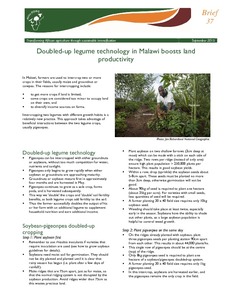Tierras de pastos
AGROVOC URI:
Drought and the farming sector: Loss of farm animals and post-drought rehabilitation
Outlines the main effects of drought on crop producers and examines the effects of drought on crop producers and examines the effects of drought induced livestock losses on crop production and considers a range of policy measures aimed at rehabilitation of the farm sector in the post-drought period; compares alternative policy measures.
Drylands development in Eastern Africa: The policy context and recommendations
Domestication of payments for ecosystem services: new evidence from the Andes.
The current project has sought to assess i) the potential of agricultural biodiversity-focused PES to serve as a cost-effective and socially equitable domesticated diversity conservation incentive scheme, as well as ii) how economic incentive mechanisms such as PES can be designed to build on and complement local institutions of collective action. Results are presented from pilot Payment for Agrobiodiversity Conservation (PACS) schemes and framed field experiments implemented in the Bolivian and Peruvian Andes aimed at sustaining diversity within quinoa, a traditional Andean grain.
Drought preparedness and drought mitigation in the developing world?s drylands
Drought is one of the major constraints affecting food security and livelihoods of more than two billion people that reside on dry areas which constitute 41% of the world?s land surface. Drought is defined as deficiency of precipitation over an extended period of time resulting in water scarcity. Our best minds should be concentrated where the greatest challenges lie today – on discoveries and new solutions to cope with the challenges facing dry areas particularly drought and water scarcity.
Drylands development, pastoralism and biodiversity conservation in Eastern Africa
Doubled-up legume rotations improve soil fertility and maintain productivity under variable conditions in maize-based cropping systems in Malawi
Smallholder farmers in Malawi must cope with small farm size, low soil fertility and production risks associated with rainfed agriculture. Integration of legumes into maize-based cropping systems is advocated as a means to increase production of diverse nutrient-dense grains and improve soil fertility. It is difficult to achieve both aims simultaneously, however.


